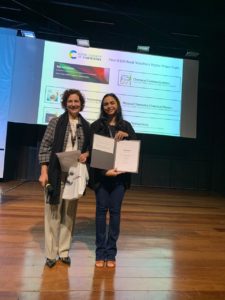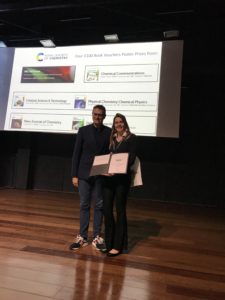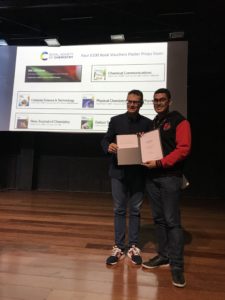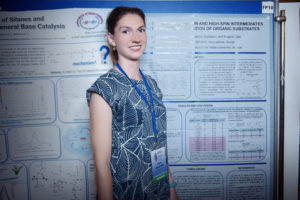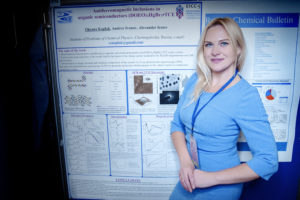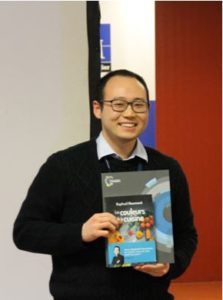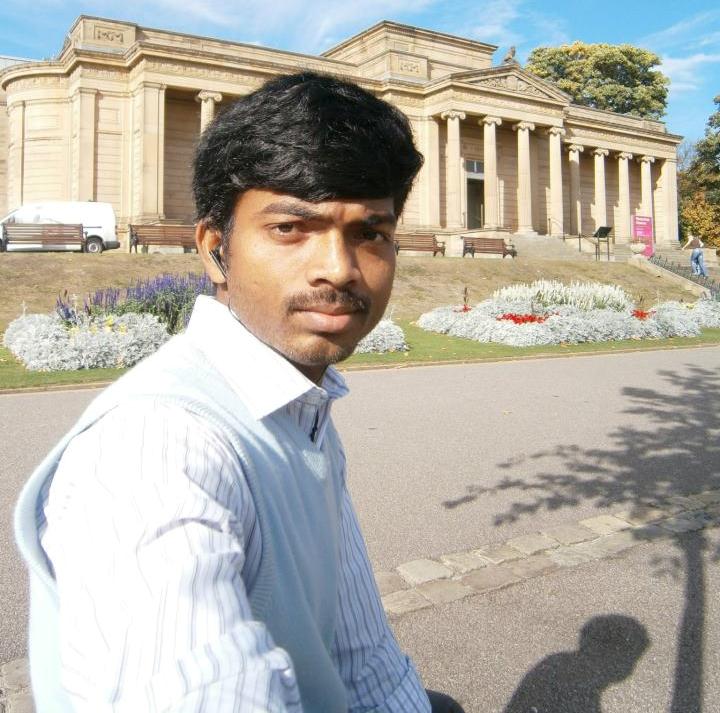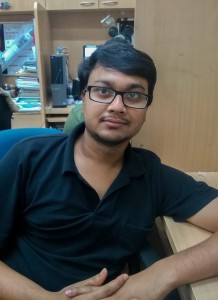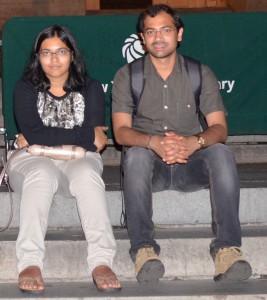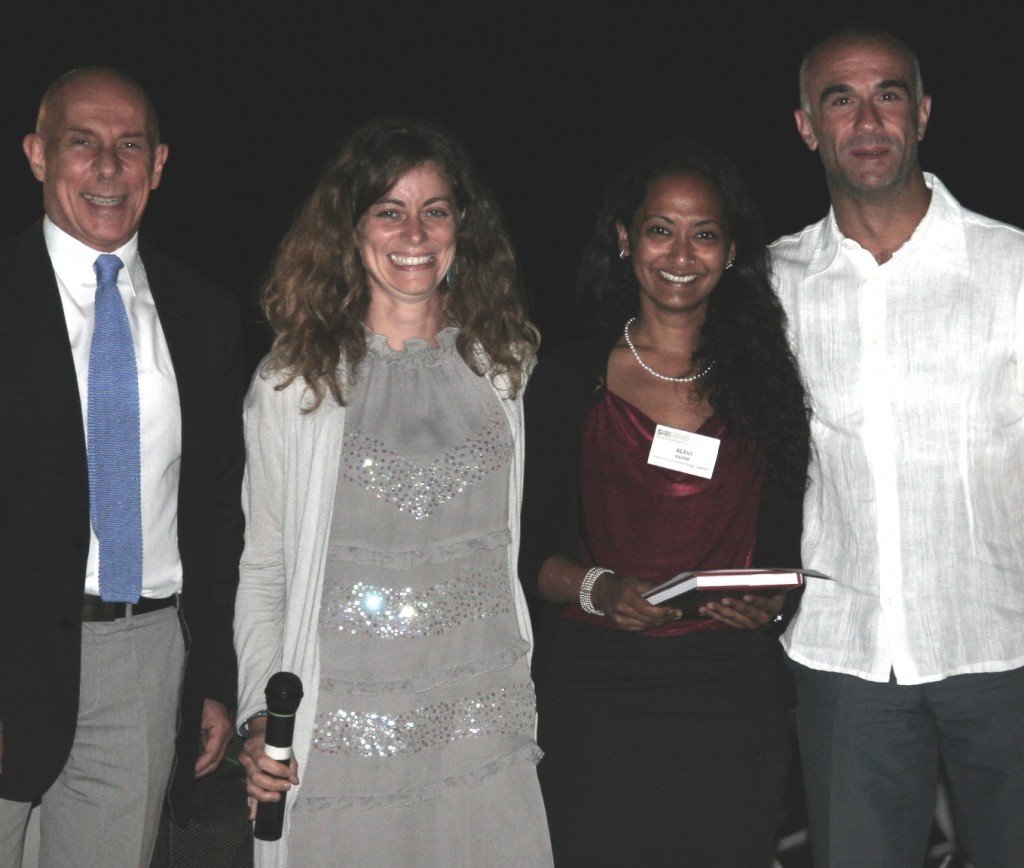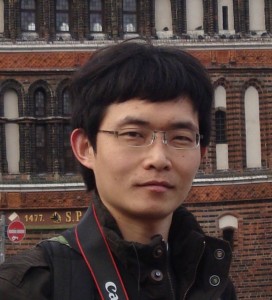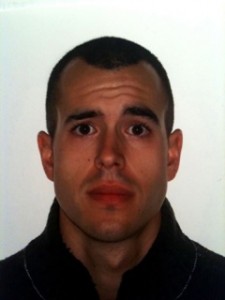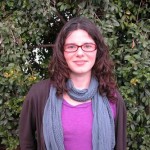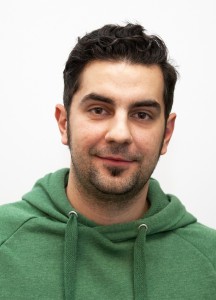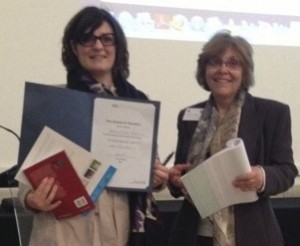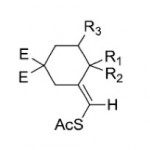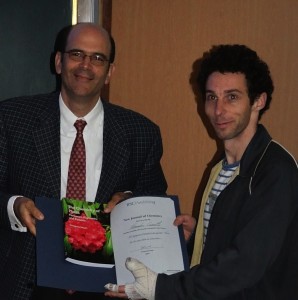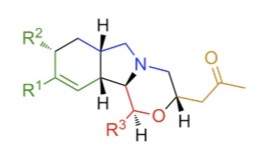New Journal of Chemistry is delighted to present the five winners of the NJC poster prizes awarded in 2015.
 Wjatscheslaw Gidt (Ph.D. student working in the group of Prof. Helmut Sitzmann at the Technischen Universität Kaiserslautern, Germany) received the award at the 13th Ferrocene Colloquium (held in Leipzig last winter) for his poster entitled “Synthesis, Structure and Reactivity of the Chromium Complexes [4CpCrX]2 (X = OAc, Cl, I, OTf)”.
Wjatscheslaw Gidt (Ph.D. student working in the group of Prof. Helmut Sitzmann at the Technischen Universität Kaiserslautern, Germany) received the award at the 13th Ferrocene Colloquium (held in Leipzig last winter) for his poster entitled “Synthesis, Structure and Reactivity of the Chromium Complexes [4CpCrX]2 (X = OAc, Cl, I, OTf)”.
His study shows that paramagnetic cyclopentadienylmetal halides of nickel, cobalt and iron, with bulky alkylcyclopentadienyl ligands, are very reactive starting materials for the formation of novel organometallic compounds capable of carbon-carbon bond formation or cleavage.
__________________________________________________________
This summer, at the International Conference on Advanced Inorganic Complex Nanomaterials held in Namur, Belgium, two young scientists were honoured.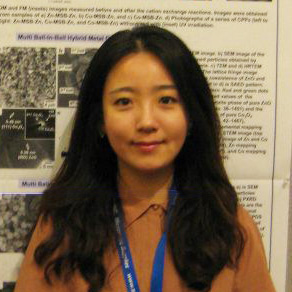
Sora Choi (Ph.D. student under the supervision of Prof. Moonhyun Oh at the Yonsei University, Korea) won a poster prize for her work “Structural and Morphological Transformation of Metal-Organic Frameworks via Destruction and Reconstruction Pathways” in which she reports the structural and morphological transformations of three-dimensional Kagome-like structured hexagonal lumps (In-MIL-68, [In(OH)(BDC)]n) with blunted ends, into three-dimensional quartz structured hexagonal rods (QMOF-2, [InH(BDC)2]n) with pointed ends.

Cédric Marien (Ph.D. student with Didier Robert at the University of Strasbourg, France and the INRS, Canada) received the award for his research that aims to develop TiO2 based nanostructures for the photo(electro)catalytic removal of organic compounds in water. His poster “Removal of organic pollutants by photocatalysis with TiO2 nanotubes” reported TiO2 nanotubes electrochemically grown on titanium foils. The study shows that the photocatalytic activity of the tubes depends on their morphology, particularly on the internal diameter and wall thickness.
__________________________________________________________
The XIII International Symposium on Bioinorganic Chemistry held in Karpacz, Poland, in September, also revealed two young talented chemists.
 The award-winning poster of Kamil Sokołowski (postdoctoral researcher at the Institute of Physical Chemistry of the Polish Academy of Sciences in the research group of Prof. Janusz Lewiński), entitled “Bio-inspired fixation of CO2 on organozinc hydoxides: efficient routes to novel nanomaterials based on zinc carbonates”, summarized his Ph.D. project. The presented research demonstrated that carbon dioxide in combination with well-defined organozinc hydroxides of the type [RZnOH]n or [(R)xZny(L)z(OH)n], can be successfully utilized for the formation of novel molecular organozinc carbonates, as well as meso- and microporous materials with unique physicochemical properties. The studies underline the great potential of simple organozinc precursors featuring CO2-reactive Zn–OH groups and proton-reactive Zn–C bonds for the design of new functional materials based on zinc carbonate components.
The award-winning poster of Kamil Sokołowski (postdoctoral researcher at the Institute of Physical Chemistry of the Polish Academy of Sciences in the research group of Prof. Janusz Lewiński), entitled “Bio-inspired fixation of CO2 on organozinc hydoxides: efficient routes to novel nanomaterials based on zinc carbonates”, summarized his Ph.D. project. The presented research demonstrated that carbon dioxide in combination with well-defined organozinc hydroxides of the type [RZnOH]n or [(R)xZny(L)z(OH)n], can be successfully utilized for the formation of novel molecular organozinc carbonates, as well as meso- and microporous materials with unique physicochemical properties. The studies underline the great potential of simple organozinc precursors featuring CO2-reactive Zn–OH groups and proton-reactive Zn–C bonds for the design of new functional materials based on zinc carbonate components.
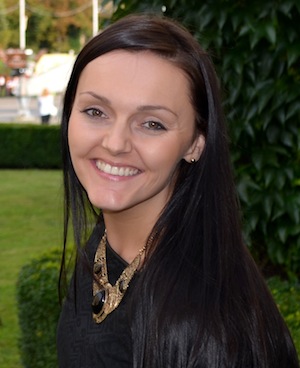 Joanna Wątły (Ph.D. student under the supervision of Prof. Henryk Kozlowski at the University of Wroclaw, Poland) was also recognised for her work, “The Impact of the Cu(II) Coordination on the Structural and Thermodynamic Properties of Poly-His Peptides”, in which she studied the coordination of Cu(II) with (His)6-tag peptide (used in IMAC chromatography) and peptide fragments from snake venoms. The results showed that all studied peptides have a high affinity towards Cu(II) ions. Formation of an α-helical structure induced by metal-ion coordination and the occurrence of polymorphic binding states is very characteristic for these peptides, but the most interesting results were obtained for a snake venom peptide fragment with nine histidine residues. The specific role of these nine His residues in venom is unknown, but this peptide may play a key role in the interaction with metal ions and consequently in the inhibition of the snake metalloproteases.
Joanna Wątły (Ph.D. student under the supervision of Prof. Henryk Kozlowski at the University of Wroclaw, Poland) was also recognised for her work, “The Impact of the Cu(II) Coordination on the Structural and Thermodynamic Properties of Poly-His Peptides”, in which she studied the coordination of Cu(II) with (His)6-tag peptide (used in IMAC chromatography) and peptide fragments from snake venoms. The results showed that all studied peptides have a high affinity towards Cu(II) ions. Formation of an α-helical structure induced by metal-ion coordination and the occurrence of polymorphic binding states is very characteristic for these peptides, but the most interesting results were obtained for a snake venom peptide fragment with nine histidine residues. The specific role of these nine His residues in venom is unknown, but this peptide may play a key role in the interaction with metal ions and consequently in the inhibition of the snake metalloproteases.
Congratulations to all five winners !
We wish them continuing success in their research and send them our best wishes for 2016!



